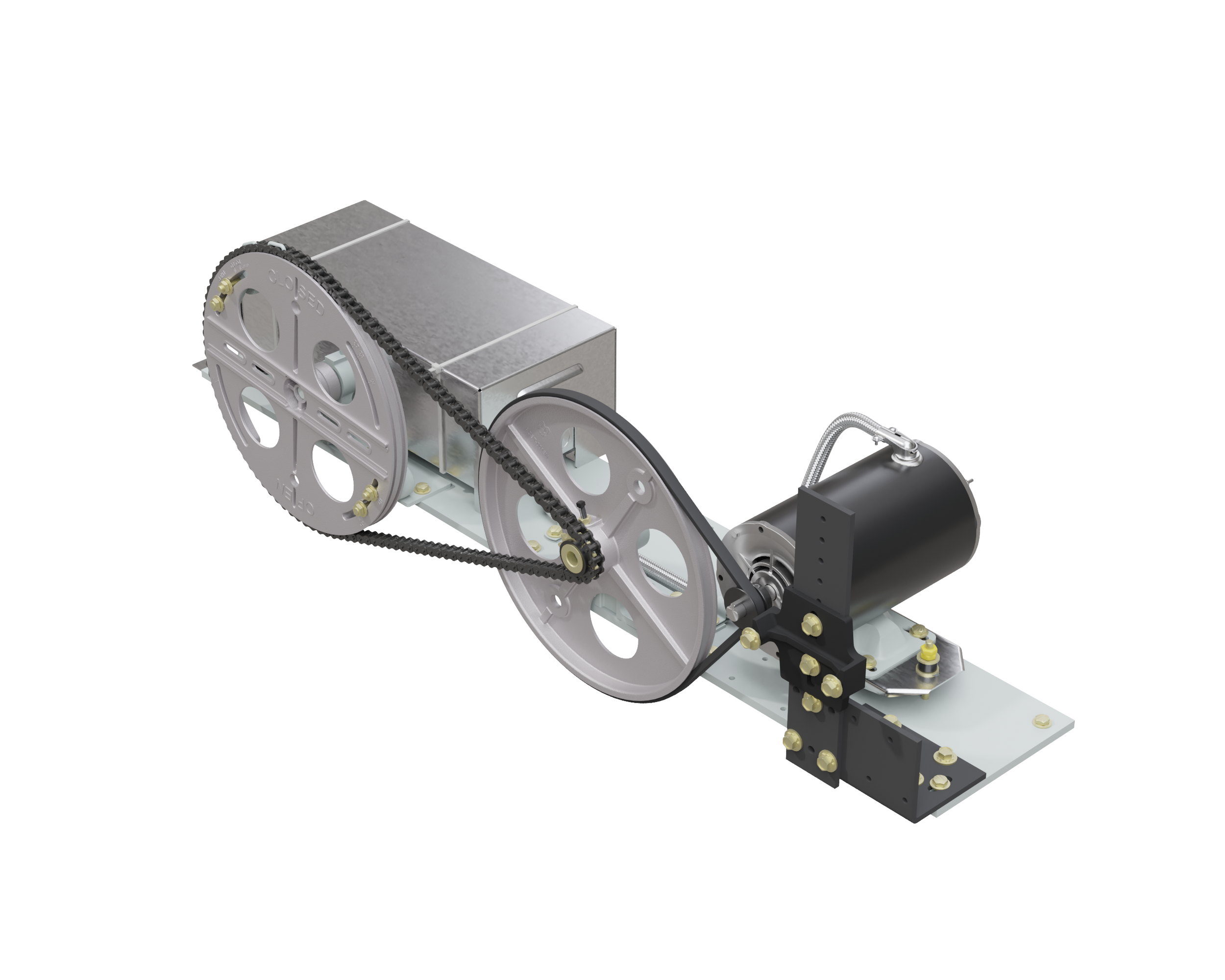Elevator Door Operators
The Story
If you are unfamiliar with the elevator industry, you may have never considered how they work; you push a button, see the doors open, go inside, make the floor you’d like to go, the doors close, and almost like magic, the doors at your floor. But how do they work? Today we will look at a small but impactful component called: the Door Operator. Each modern passenger elevator today will almost certainly utilize a door operator to open and close the doors. The small units will receive a signal from the controller to open and close the doors only when it is safe. These units are located directly above the door and often use a small motor, a belt, or an arm to actuate the door.
How reliable are door operators?
Like any moving part or component, everything has a set lifetime, and door operators are no different. While Element utilized only the best components and parts like the GAL MOVFE 2500 closed-loop operators, problems will still arise from time to time. Gears, belts, drives, and relays all play an integral role in ensuring these units operate safely and efficiently. Age and level of maintenance also play a significant role in the reliability of these units. As parts begin to wear, more and more service calls arise until these units are repaired or replaced. A little-known industry statistic is that almost 70% of service calls are related to door operators and lock issues. Door operators these days come installed with restrictors to prevent the doors from opening in unwanted, unsafe regions. Sometimes, however, they may become stuck and prevent people from exiting the elevator. Here are some of the few typical elevator door operator faults:
Doors fail to open fully or close fully (DCL or DOL faults)
Relay problems not sending correct open/close signals
sensor failures not providing the controller with accurate information
Gate switches are not making proper electrical contact
On the closed-loop door operator, the encoder is not functioning
Broken belts, chains, or actuators
What is an elevator closed-loop door operator?
A newer form of technology has recently appeared for door operators that utilize a position encoder on the motor. This encoder works almost like an odometer/speedometer on your car. As the motor turns, it counts pulses as the door opens and closes to know precisely where the door is. They utilize small drive systems that strictly control door speeds, torque, timing, and smoothness. These closed-loop door operators are often built more robust and used on heavy-duty equipment. Element exclusively installs these higher-end units as they are more reliable than their non-closed-loop alternative. Here are some benefits of closed-loop operators:
Velocity feedback (more precise & consistent speed)
Smoother & faster operation
Less prone to closing faults
Easier to maintain
Longer lifespan (better investment)
Door Operator Upgrades
Why should I upgrade my door operator?
If you’re building is constantly suffering from elevator breakdowns; statistically, it may be the door operator. As mentioned above, because these units are in constant motion, dozens if not hundreds of times per day, depending on the building and traffic, they will wear down much faster than other elevator components. In addition, the constant moving open and close can significantly impact the belts, chains, arms, and relays, causing numerous unwanted shutdowns. Upgrading your door operator with a new high-end GAL MOVFE 2500 door operator will significantly reduce your service callbacks and increase your overall building satisfaction.
How much does an elevator door operator upgrade cost?
Major elevator companies will often charge you a significant price for these upgrades. It is not unheard of for elevator door operators to cost $ 25,000 - $30,000 or more when offered pricing by multinational firms. At Element Elevators, we provide a better product at a fraction of the cost. Our door operator packages start at $15,000 and range depending on the types of doors, control interfacing, and other site-specific factors. We’ve installed hundreds of these units and continue to service and maintain them for years without issue.
How long does it take to replace an elevator door operator?
The upgrade process for door operators varies from site to site; however, from our experience, you can expect a door operator to be replaced within 1 - 2 working days, with most installs starting in the morning and having a new operator before dinner time. Although these units are very easy to install and set up, we have this broken down to a science at this point.
Can I still upgrade my door operator if I plan to modernize my elevator later on?
This is a question we get asked quite often. These elevator door operators we install are the same ones typically installed during routine modernizations. In many cases, when we perform the modernization of an elevator, we find that the operators have been upgraded within the last few years. When that happens, we hook up the older door operator to the newly installed modernized equipment and clean everything up. So, in short, yes, absolutely, you can upgrade your door operator now and retain it later on. As a bonus, the price of the modernization will also be less expensive as this part will not need replacing.
My elevator contractor is charging me too much for a door operator. Can I use Element instead?
Absolutely! We have upgraded door operators for many clients, municipalities, building owners, and institutions throughout the GTA. Many of these clients received extremely high quotations for something we do better and at half the cost. Our technicians are fully licensed, and we only utilize the best non-proprietary products. Our prices are far lower because we are a family, locally owned, and operated company with significantly lower overhead costs.
Still, have questions?
No problem, give us a call at any time, and one of our elevator experts will help any way we can. Should you want a quotation, please do not hesitate to contact us and let us know. We will provide you with a free, no-obligation consultation.


